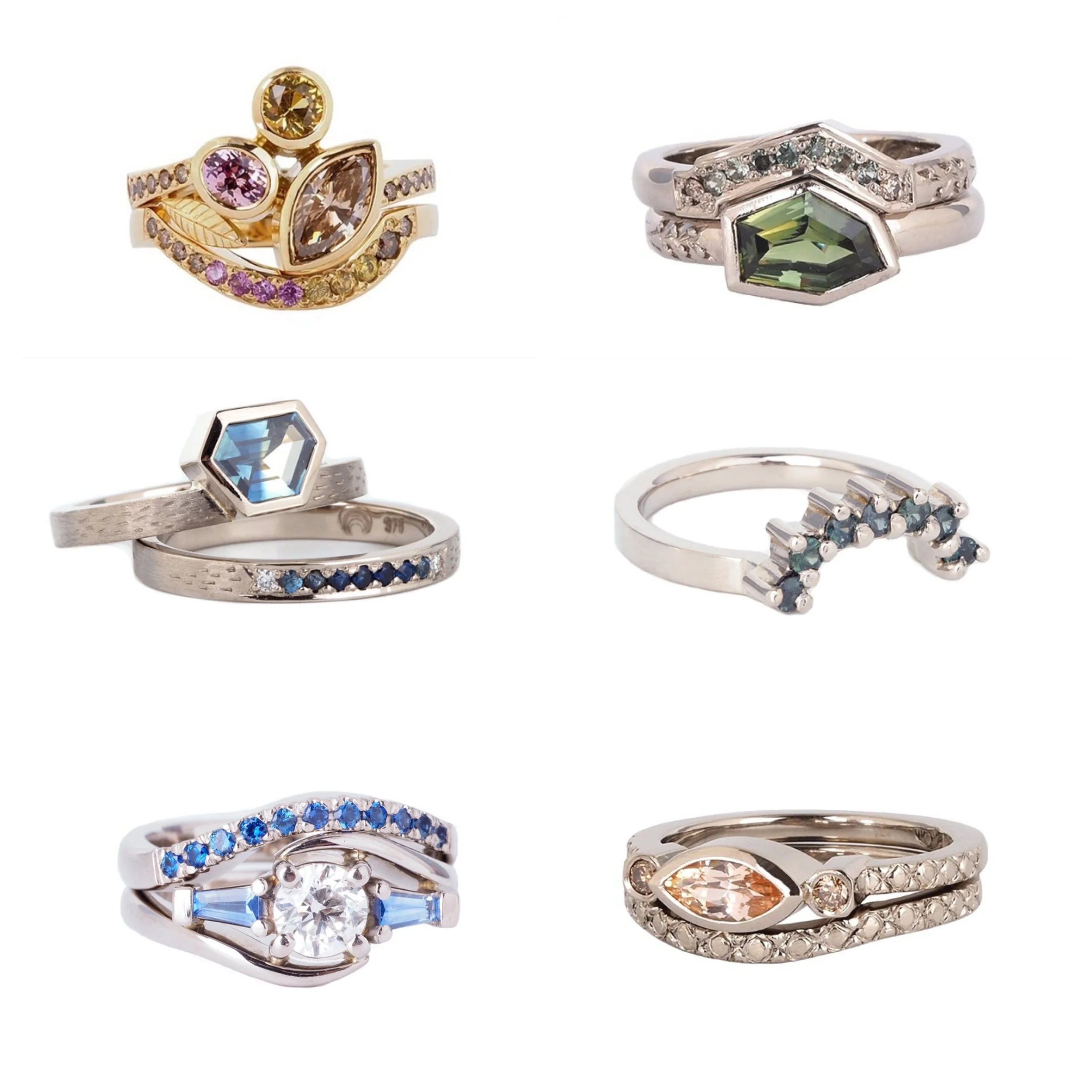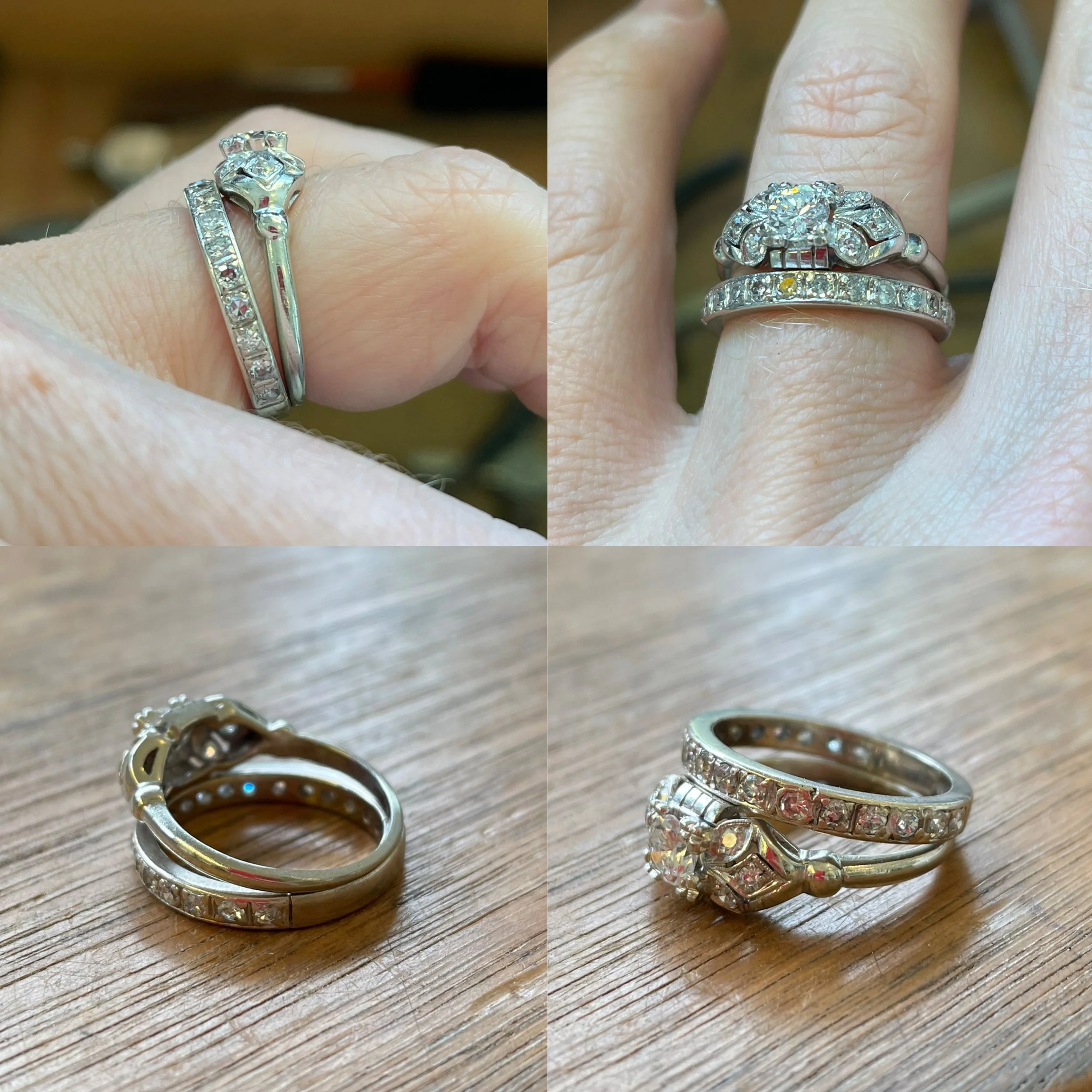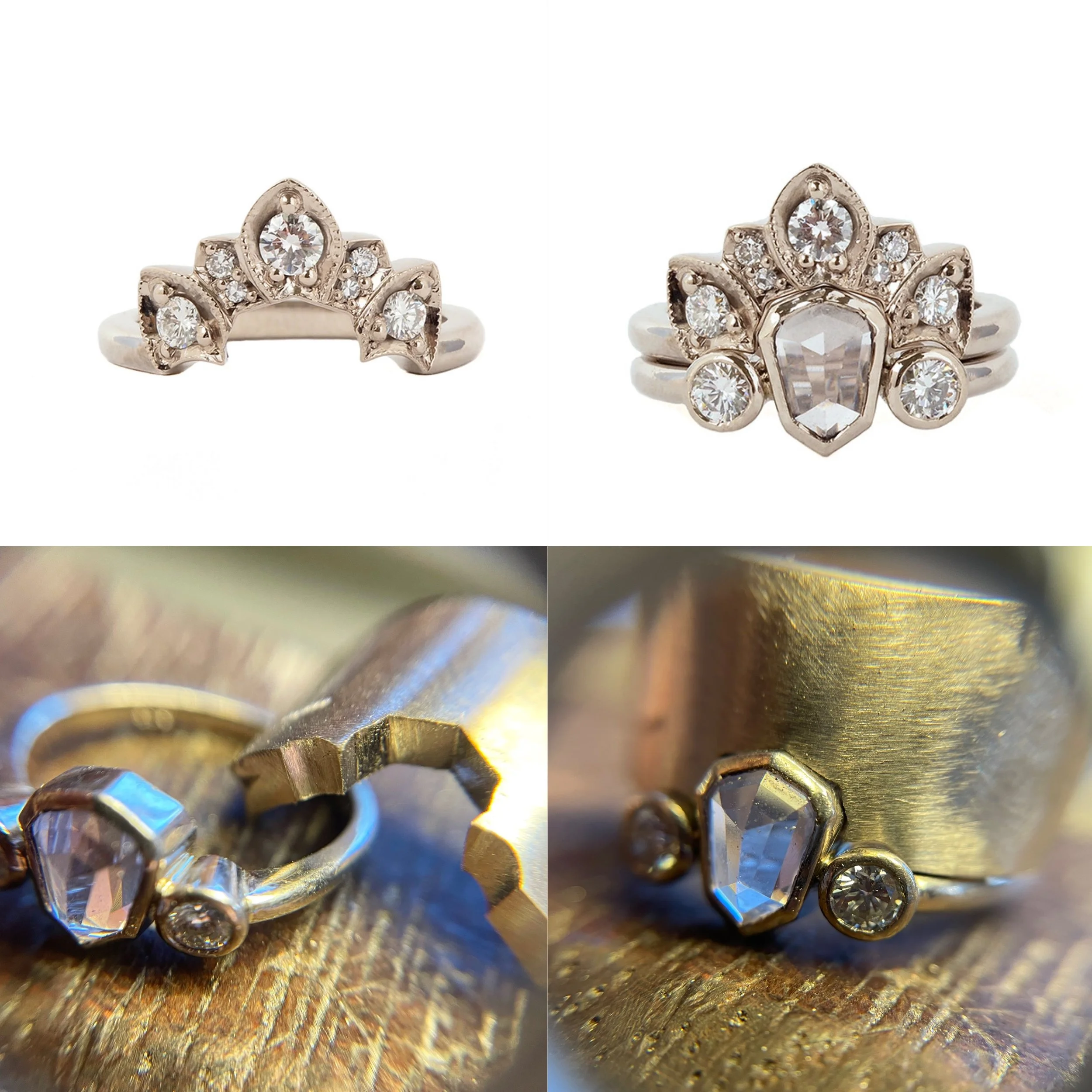What Is A Fitted Wedder, And Do I Need One?
Are you planning on wearing two rings together in your wedding set?
Well, you’re going to need to ask yourself these questions when either:
designing or buying your engagement ring
you start looking for your wedding ring to wear with your engagement ring
What is a fitted wedder?
A fitted wedder can also be called a fitted wedding band, a curved band, a customised wedding band, or anything else that describes a type of band which fits against the shape of the side of the engagement ring.
Some examples of wedding band sets and fitted wedders that have been custom fit.
Why is it important?
The precious metals that our rings are made from are generally quite durable, but they’re not indestructible. When two (or more) rings are worn stacked together constantly and for a long time - which is exactly how we wear our wedding rings - they will rub together and, slowly but surely, wear each other down.
When the sides of your rings are flat, then they’ll probably wear together just fine, and you’ll barely notice it at all. Even after decades of wear.
But if the sides of one or both of the rings are not flat or fitting snugly with each other, then over the years you’ll notice that some of the side details will change shape as they wear away.
This is important because those side details might be structural to the strength of the stone setting, and are often the areas that incorporate the finest details of the ring design.
I doubt that a few decades of ill-fitting rings wearing together can have that much of an effect?
Trust me. I’ve repaired, restored, and completely remade rings that have had the whole sides of a setting destroyed by this.
It can be tempting to want to combine Granny’s plain wedding band with your Art Deco engagement ring, but please get some advice from a jeweller first. It might simply be a case of wearing one or the other on occasion, or even getting them permanently joined so that they look like two rings, but are in fact one.
An example of a beautiful, but ill-fitting antique set of rings, showing how thin and worn out the back of the band is on the engagement ring after decades of being worn together like this.
If I already have my engagement ring, how can I tell if I need one?
A lot of traditional solitaire (single stone) engagement ring designs are made to allow for a flat sided wedding band to accompany it. But this is not always the case so here’s some easy ways to check if your ring needs a fitted wedder:
If you were to draw a line on your finger next to the ring where it’s touching your skin, and that is not a straight line, then a fitted wedder is ideal.
If the base of the stone setting details are almost but not quite touching your finger, then a jeweller will need to assess if there’s enough room for a flat sided wedding band to slide in underneath. If not, the wedding band may need some small notches carved into it so that these parts of the stone setting can snuggle into them.
If the stone in your ring is particularly large, it’s highly likely that the wedding band will need an equally large curve to go around the stone.
Can I combine colours and carats of gold or other metals?
It’s ideal to have the same carat and colour of gold (or platinum/silver) for the two rings. Each carat and colour type of metal have different properties and hardnesses, so they will wear differently over time.
Mixing carats and colours means that the harder one will wear away the softer one more quickly. You can learn more about the carats and colours of gold alloys here.
However, sometimes people love to have a mixed coloured combination, so it’s a good idea to chat about these options with your jeweller. There are some ideal design and mixed colour combinations that will work well together so don’t be afraid to ask.
Do people get them made at the same time as the engagement ring?
Sometimes!
When designing a custom engagement ring, we always make sure there are options or discussions around how the wedding band might work.
Everyone is different, and so there are no hard and fast rules. Some people just want to wear one ring. Some are clear that they want a plain, flat sided wedding band option with their engagement ring. Some are happy to have a custom, fitted wedding band made at a later stage. And some want the two rings made at the same time.
Whatever way it goes, it’s all doable.
It’s just important to know that if the engagement ring does need a fitted wedder made, then the engagement ring needs to be back in the workshop with the jeweller for the making part, so that the jeweller can ensure that they are a perfect fit for each other. In a jeweller’s world, even 0.1 of a millimetre can make all the difference between a good fit and a not so good fit.
An example of an ornate fitted wedder being custom made to fit against the engagement ring.
Final thoughts
No matter how well your rings fit together, it’s always important to look after them. Metal wears over time, and our rings bear the brunt of our active hands. Number 2 in the 10 ways to keep your jewellery in tip-top shape is the best option for longevity, in this humble jeweller’s opinion.
If you’re searching for vintage or antique rings, then it’s a huge advantage to know about this! Asking the seller or being aware of looking out for this kind of wear and tear along the sides of the ring can be a huge money saver in the long term. I’ve repaired and remade engagement rings that were bought without a good understanding of how much longevity was left in the ring, and they needed a costly repair after only a few years. You might find it useful to check out this other post, 5 Things To Be Aware of With Vintage Jewellery.
And if you’re completely unsure altogether, just ask the jeweller!
Originally Posted May 24, 2021


